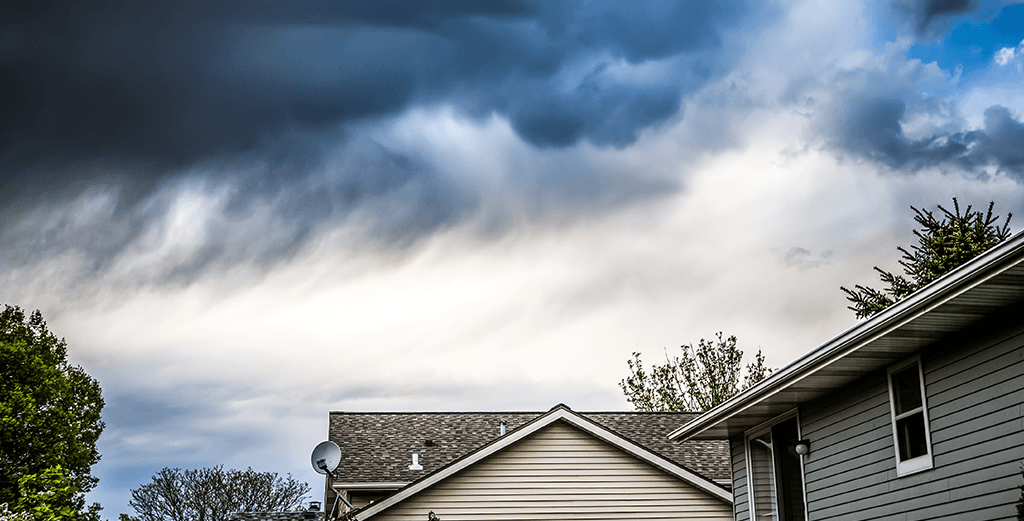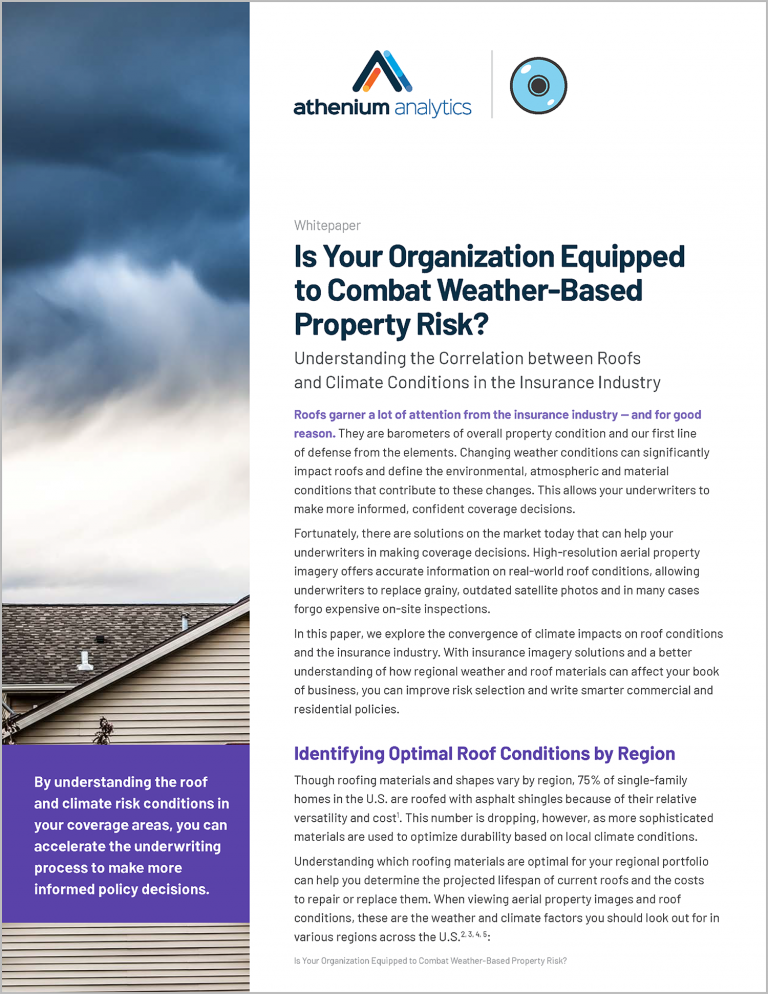As industry and consumer trends react to climate change, your underwriters may see a new generation of roofing materials pop up on their aerial imagery (using solutions like IRIS from Athenium Analytics). Depending on your regional locations and coverage areas, the changing climate is leading owners and construction managers to consider more environmentally friendly options for roofing materials.
Climate change is especially noticeable in urban areas because they contain so many less-permeable surfaces. The roads, bridges, sidewalks, parking lots and buildings in these concrete jungles absorb more sunlight than natural areas such as grass and water. This absorption leads to increased temperatures in cities; in fact, asphalt absorbs 96% of sunlight versus 75% for natural grassland. New York City averages temperatures that are 2-5°F warmer than the surrounding countryside during the daylight and up to 20°F hotter in the evening (because of heat radiation).
New and emerging roofing trends are becoming more common as builders look to combat these heat islands. Here are three roofing trends of which your underwriters should be aware.
White roofs
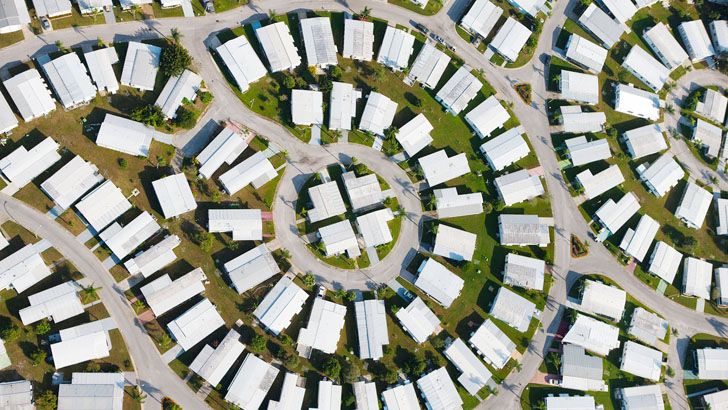 Anyone who’s slipped into a black car on a summer day understands how effectively dark colors absorb heat. This same principle applies to roofs: Dark roofs absorb more heat and hold that heat longer, raising temperatures inside and around structures and severely impacting cooling costs.
Anyone who’s slipped into a black car on a summer day understands how effectively dark colors absorb heat. This same principle applies to roofs: Dark roofs absorb more heat and hold that heat longer, raising temperatures inside and around structures and severely impacting cooling costs.
By using asphalt roofing materials coated with white reflective paint, white flashing and specialized gravel mixtures, homes and businesses can reduce power consumption. The lighter materials act as a reflective surface, allowing sunlight to bounce off, preventing heat from being absorbed into the structure.
Many urban engineers are pushing white roofs as a way to lower temperatures by as much as 6°F. There are plans in New York City, Chicago and Los Angeles to explore these white roofs. If 90% of roofs in these cities can be coated in white, this could lower temps by as much as 5°F per day.
Green roofs
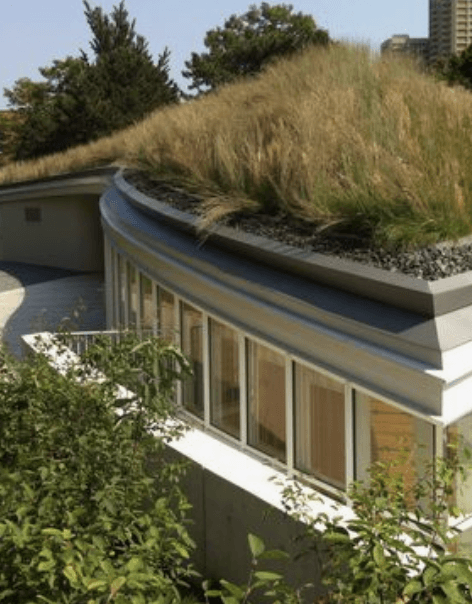 Businesses and homes across the country are taking the idea of rooftop gardens to the next level by installing green, or “living,” roofs on their structures. Green roofs consist of a waterproofing membrane, growing medium (soil) and vegetation (plants) overlying a traditional roof. The ballasted structures provide a natural barrier between roofing materials and natural conditions – sunlight, wind and rain – that could otherwise cause damage.
Businesses and homes across the country are taking the idea of rooftop gardens to the next level by installing green, or “living,” roofs on their structures. Green roofs consist of a waterproofing membrane, growing medium (soil) and vegetation (plants) overlying a traditional roof. The ballasted structures provide a natural barrier between roofing materials and natural conditions – sunlight, wind and rain – that could otherwise cause damage.
Green roofs thrive without much upkeep, can support most plants from hardy grasses to vegetable gardens, and can act as additional green spaces in cities that are often overrun by asphalt.
Because of their multiple environmental benefits, green roofs have already been embraced around the world. Though they have yet to fully catch on in the U.S, large-scale green roofs are already installed in some high-profile places, saving thousands per year in heating, cooling and repair costs. This includes Millennium Park in Chicago, The Getty Center in Los Angeles, Columbia University in New York City, the Ford Assembly Plant in Dearborn, Mich., and Seattle’s City Hall.
For underwriters, it’s important to understand that green roofs do not indicate structural problems and leakage issues. Professionally installed green roofs are just as stable as traditional roofs and, in some cases, can actually better handle natural hazard events like extensive precipitation and winds.
Solar roofs
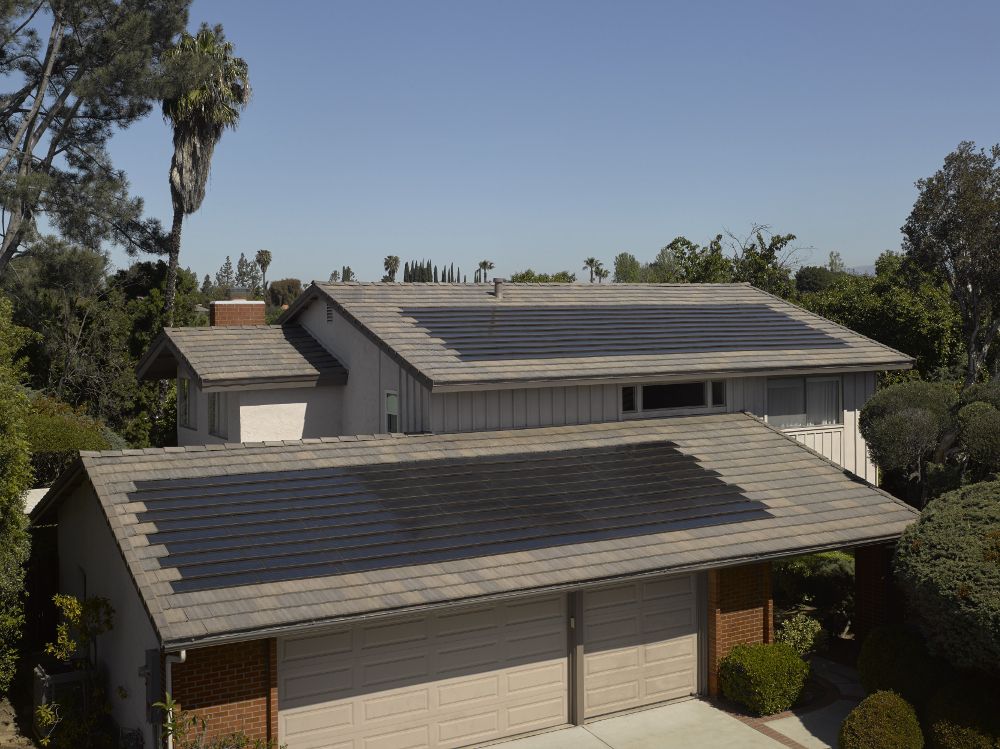 Solar panels have been around for decades, but solar roofs are more advanced and innovative. Vendors like Tesla are developing solar glass roof tiles and other thin materials that can be installed directly onto the roof surfaces of homes.
Solar panels have been around for decades, but solar roofs are more advanced and innovative. Vendors like Tesla are developing solar glass roof tiles and other thin materials that can be installed directly onto the roof surfaces of homes.
The sun produces enough energy in one second to power every home and business on Earth for 500,000 years – but are solar roofs safe to insure? Solar tiles are still in their infancy, so underwriters will likely require more long-term data to determine the risk of insuring structures with these panels. But this can also be an opportunity to expand coverage, especially as residential solar continues to grow in popularity.
The jury is still out on whether any of these trends is a viable long-term solution for urban overheating and other climate issues we face today. It’s also not clear if one solution will emerge as the clear favorite for next-generation roofs. But, it’s a step in the right direction toward a more sustainable future – one in which your underwriters will see alternative roofing materials like these more often.
Climate change is already affecting roof conditions and materials across your coverage area. Download our free whitepaper to see a region-by-region breakdown and learn how you can mitigate property risk and write better business:
Image sources
1. https://inhabitat.com/new-study-shows-white-roofs-are-three-times-more-efficient-than-green-roofs/
2. https://www.livingroofsinc.com/fields/public
3. https://www.solarpowerworldonline.com/2019/04/the-latest-on-solar-roofs-solar-shingles-and-solar-tiles/

